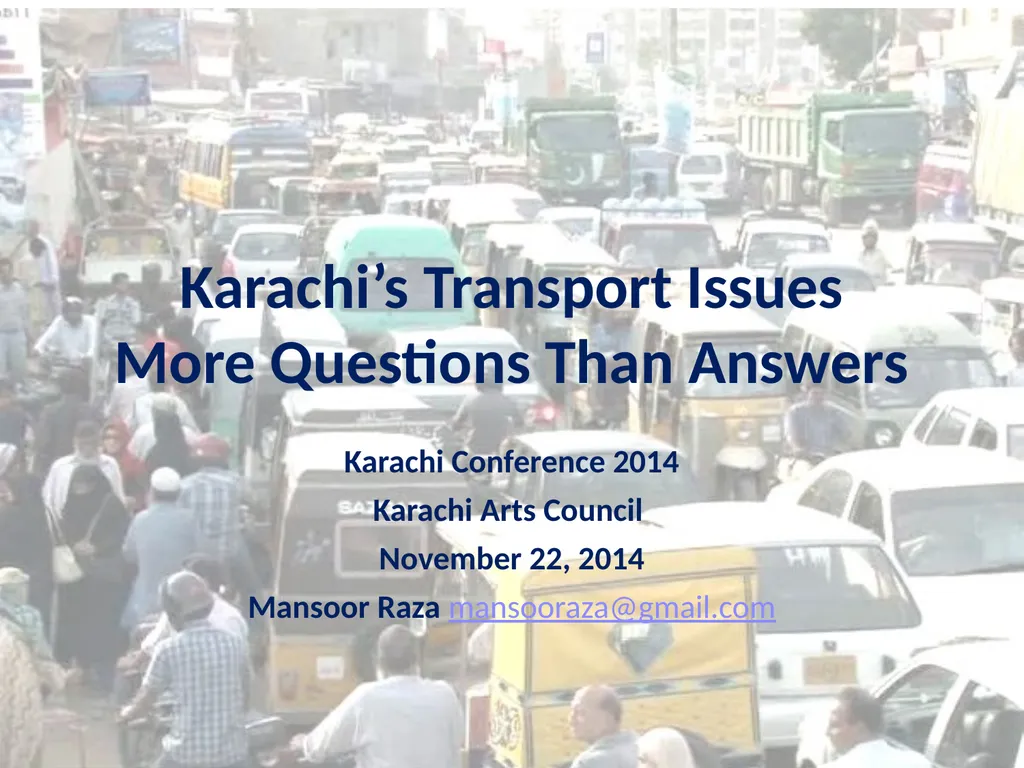
Author : mitsue-stanley | Published Date : 2025-08-16
Description: Karachis Transport Issues More Questions Than Answers Karachi Conference 2014 Karachi Arts Council November 22, 2014 Mansoor Raza mansoorazagmail.com Credits This Presentation is based on the work done by Mr. Arif Hasan, Urban ResourceDownload Presentation The PPT/PDF document "" is the property of its rightful owner. Permission is granted to download and print the materials on this website for personal, non-commercial use only, and to display it on your personal computer provided you do not modify the materials and that you retain all copyright notices contained in the materials. By downloading content from our website, you accept the terms of this agreement.
Here is the link to download the presentation.
"Karachi’s Transport Issues More Questions Than"The content belongs to its owner. You may download and print it for personal use, without modification, and keep all copyright notices. By downloading, you agree to these terms.













